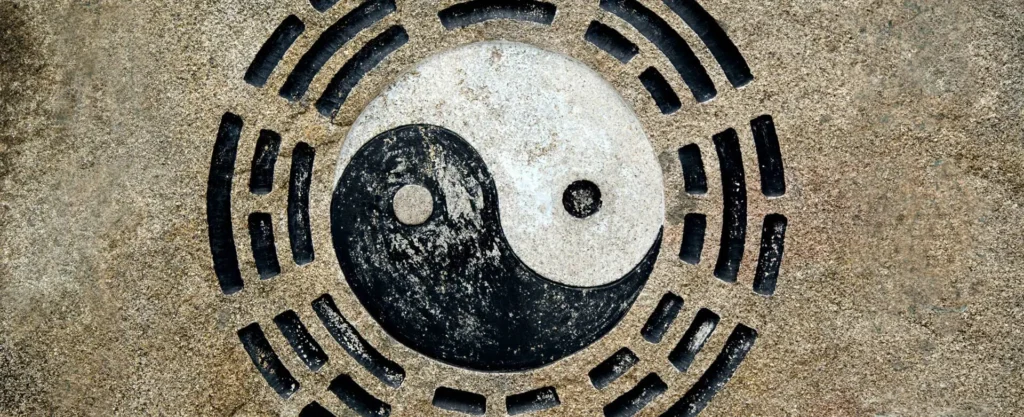The concept of Yin and Yang is fundamental not only to Tai Chi, but also many other aspects of Chinese culture and philosophy. The Yi Jing, or “Book of Changes”, a classic of Chinese thought, deals with the interplay of Yin and Yang, and how they underpin the theory of Chinese medicine.
The terms are ancient – the first surviving characters appearing on bones used for divination about 3,500 years ago. Originally, they referred to the dark, north-facing side of a mountain (Yin), and the light, south-facing slope (Yang).

We now use them to describe any relationship between two apparently opposing, but related concepts, such as passive/active, down/up, or female/male. Yang represents the creative, or active aspect, whilst Yin depicts the receptive, or passive side.
However, these concepts do not exist in isolation from each other, but are mutually dependent, and maintain a balance in the natural course of events. Once something becomes completely Yin, then Yang will follow and vice-versa. This can be seen in the natural cycles that surround us, from the changing of the seasons, to the tide, or simply the passage of the sun and moon.
Within Yin and Yang are further levels of interplay. Earth (Yin) and sky (Yang) can each be further divided – the earth contains valleys (Yin) and mountains (Yang), the mountain has a dark (Yin) and light (Yang) side – the process is infinite.
In Tai Chi, the interplay between Yin and Yang can be found at every level, from the most superficial to the truly profound.
